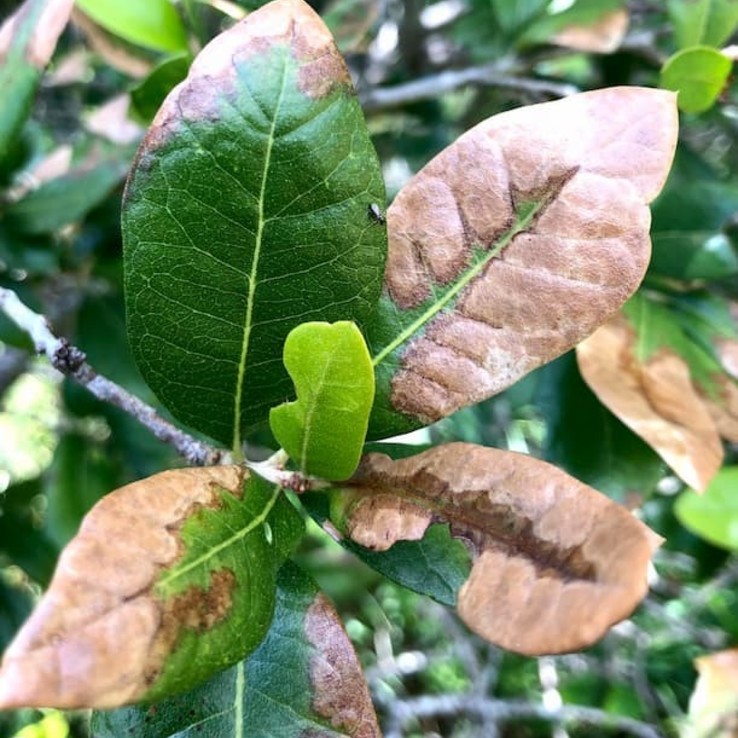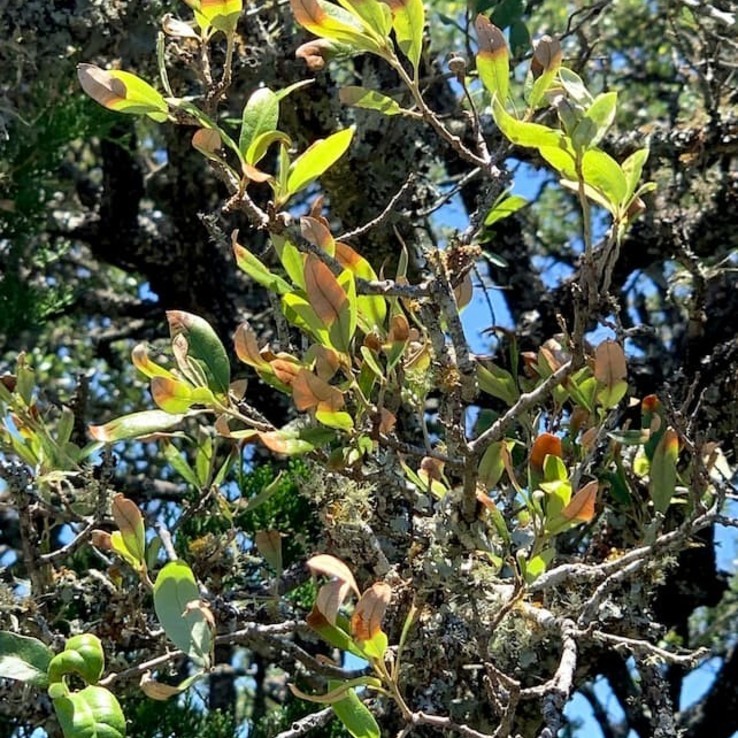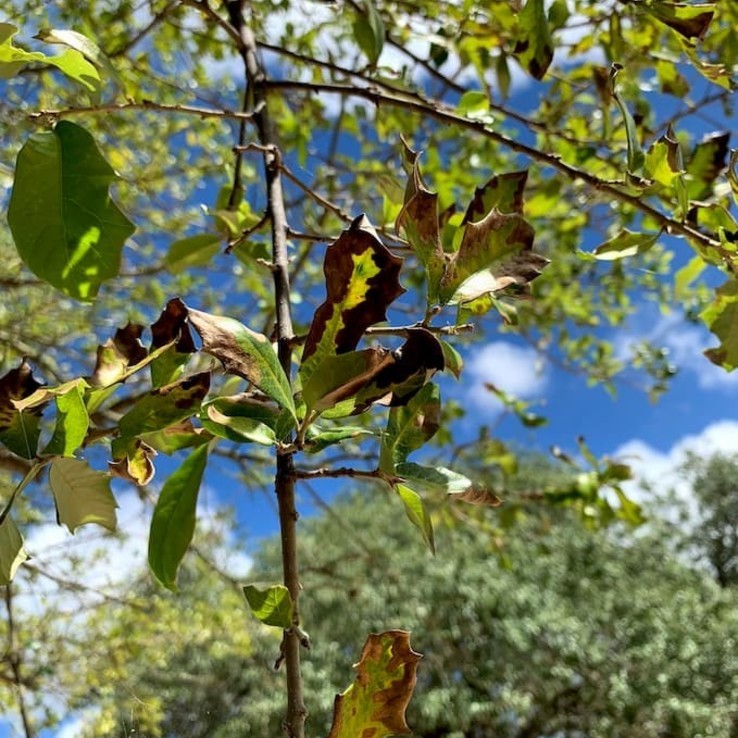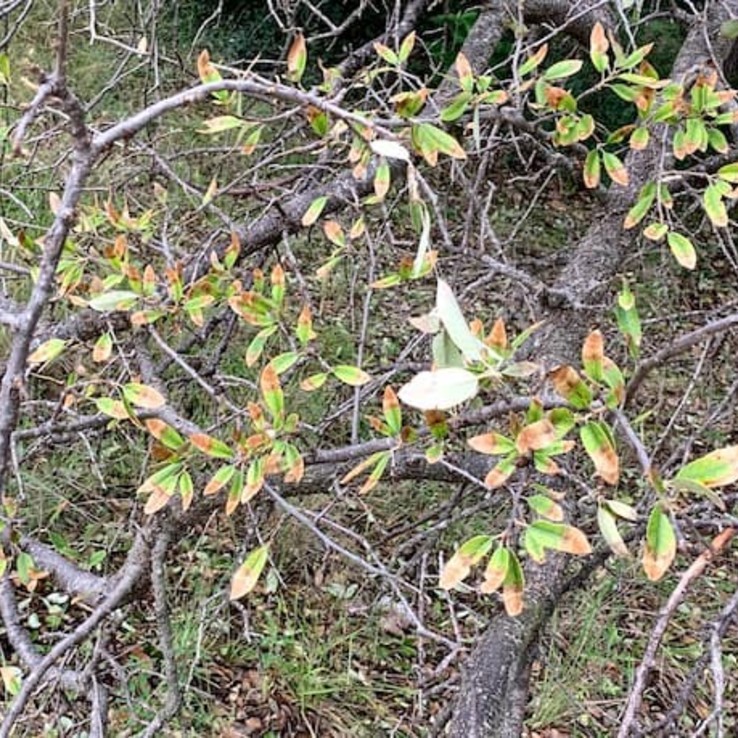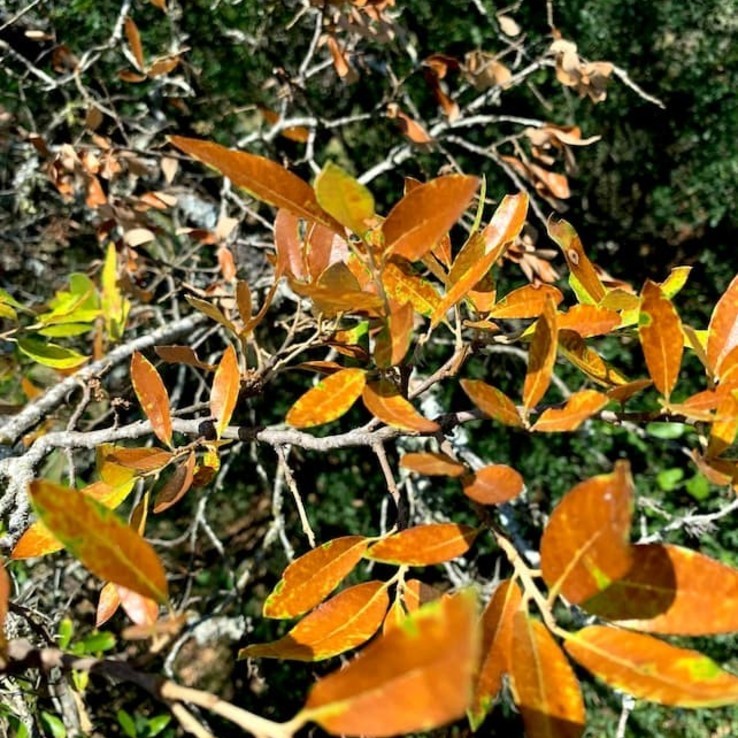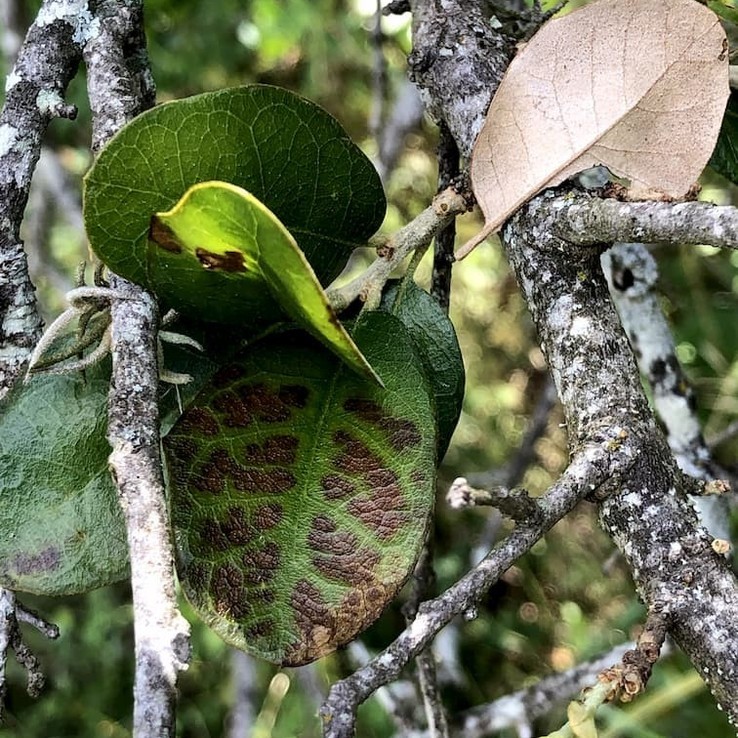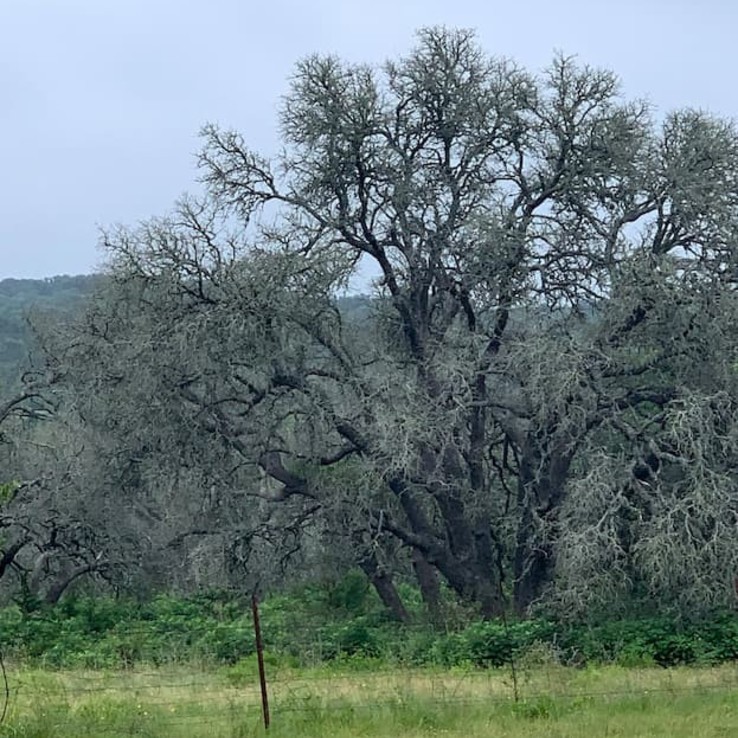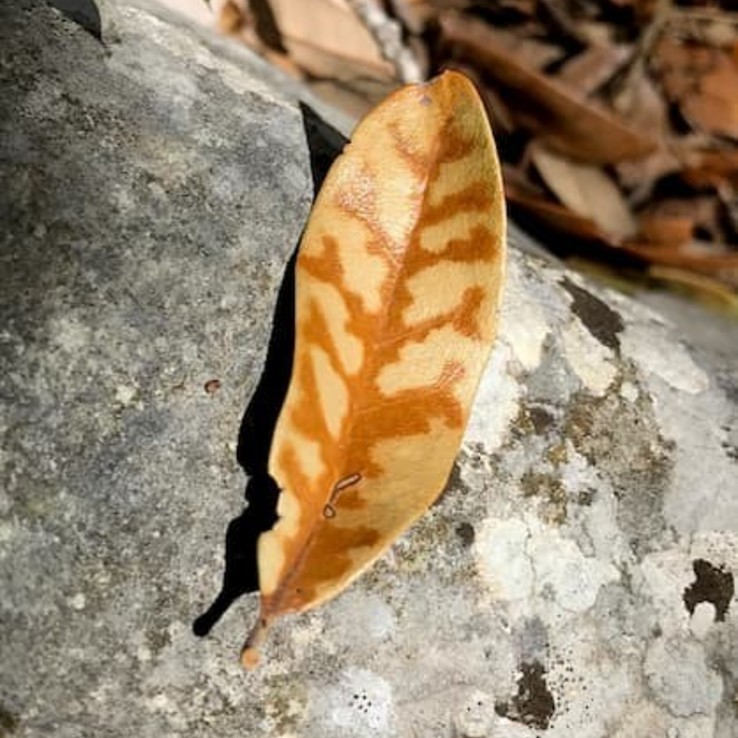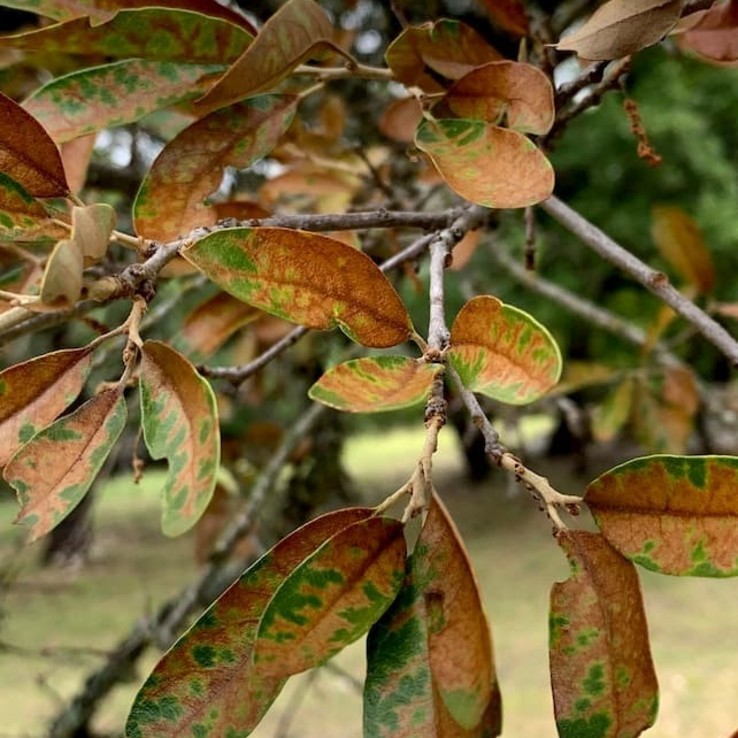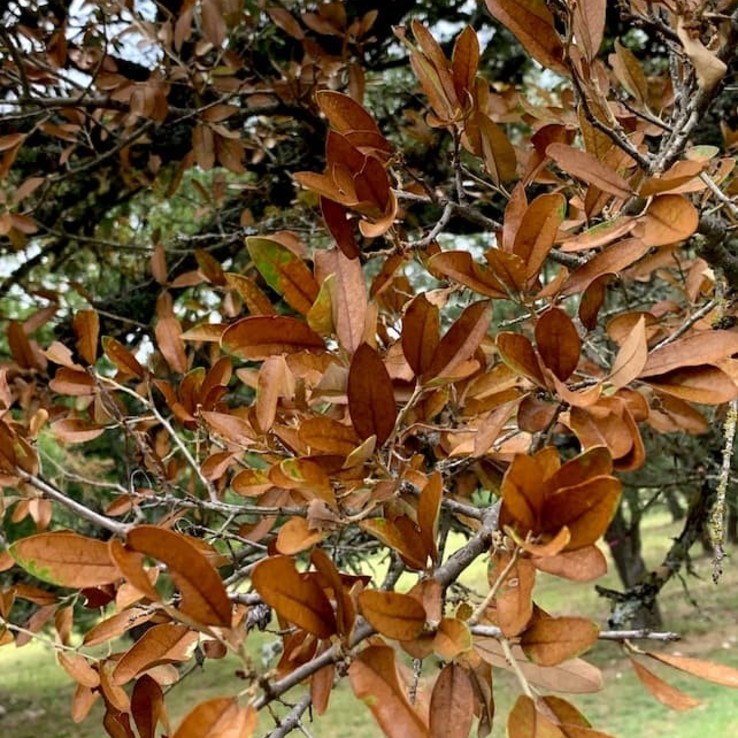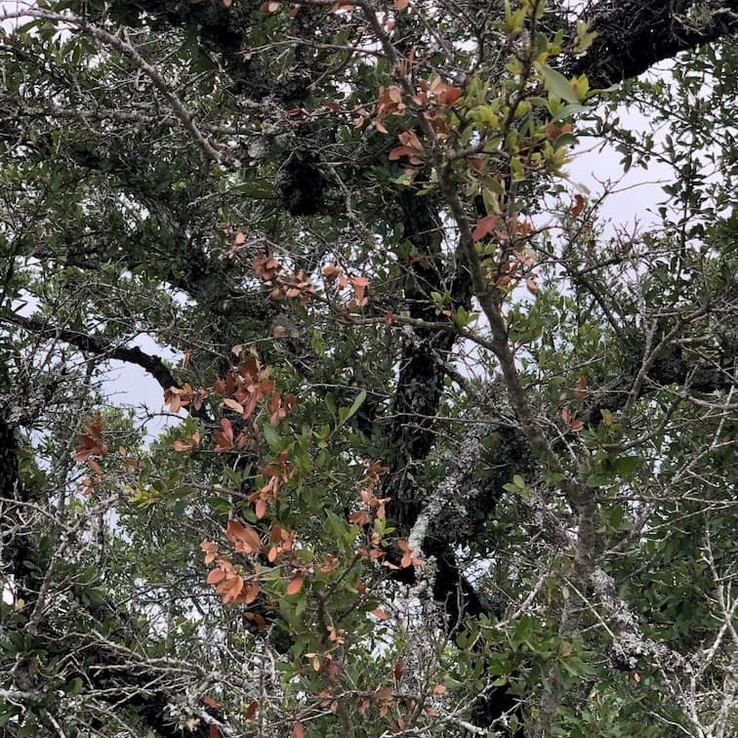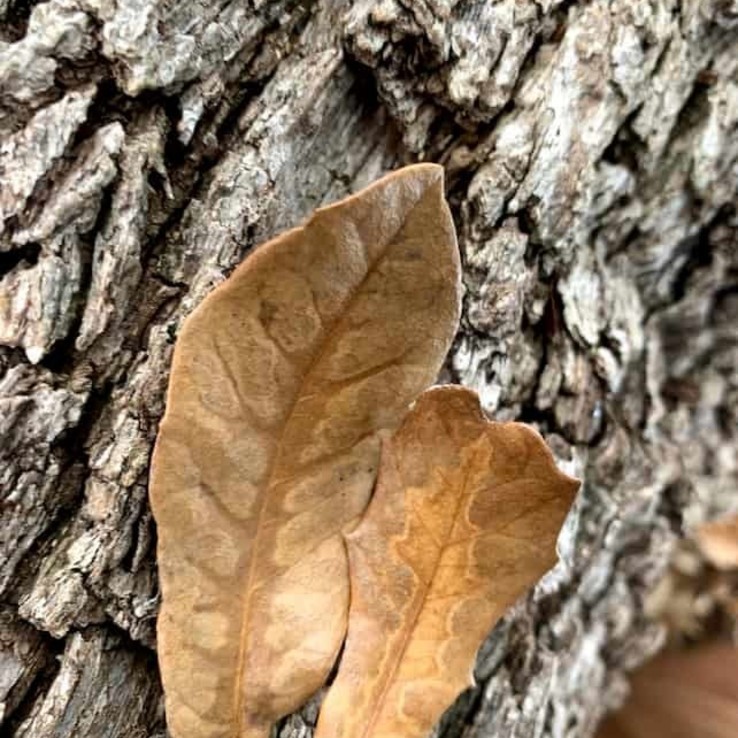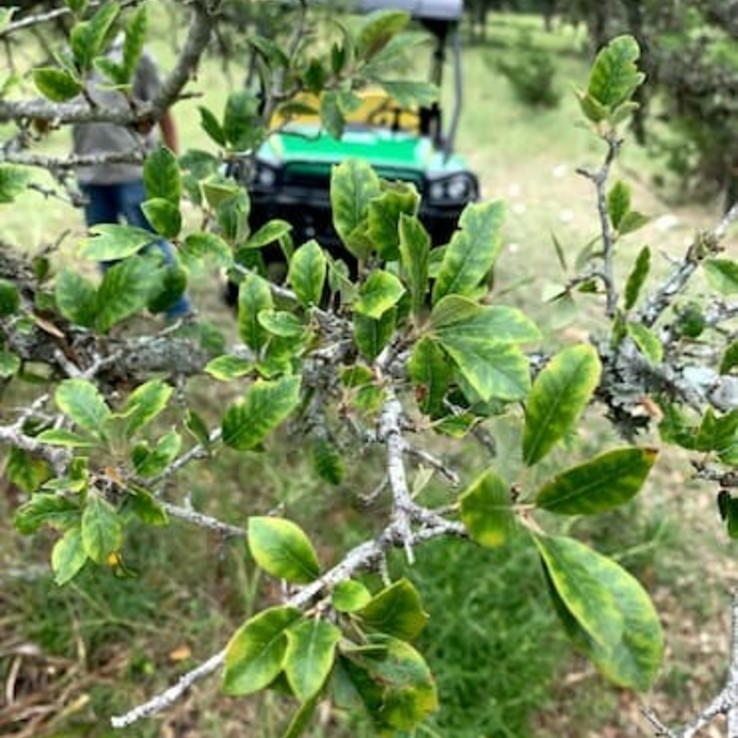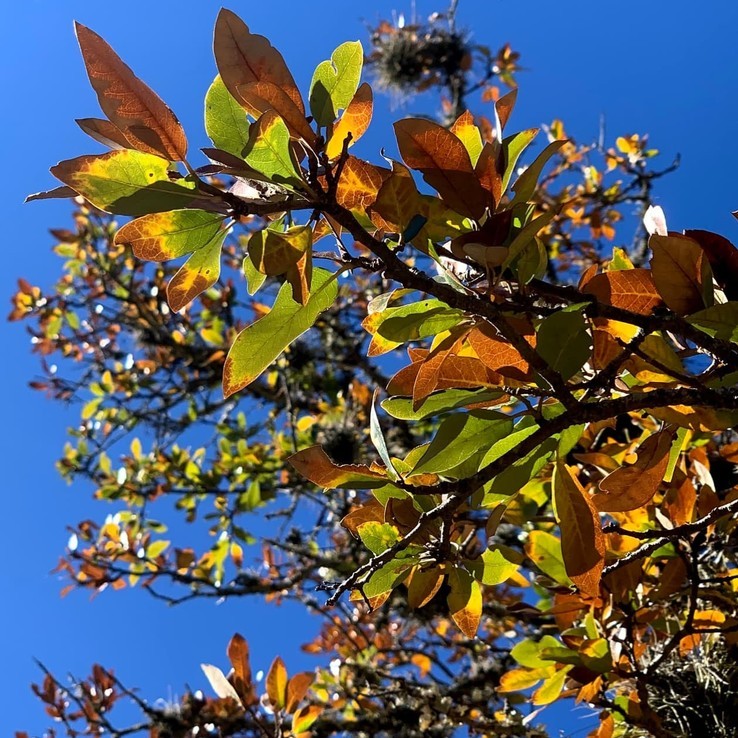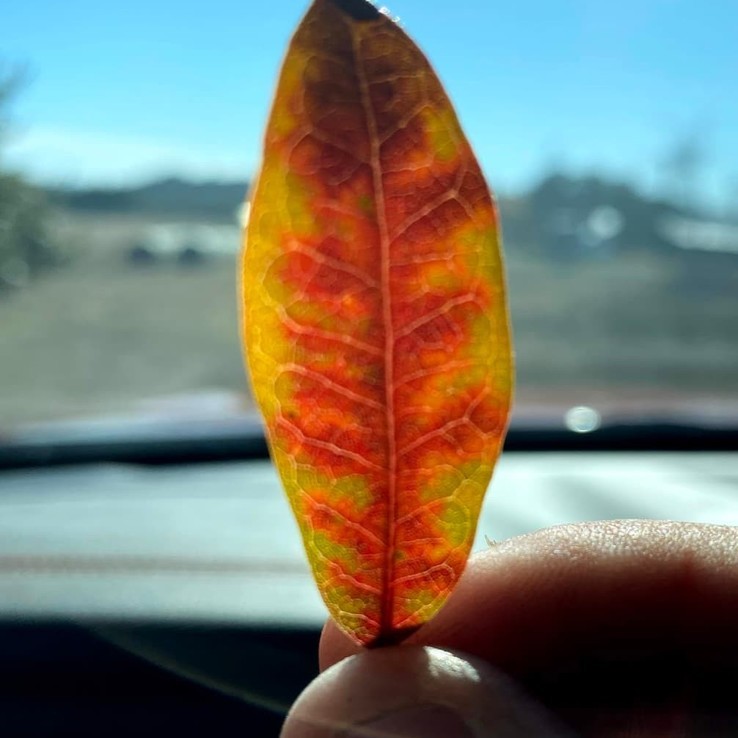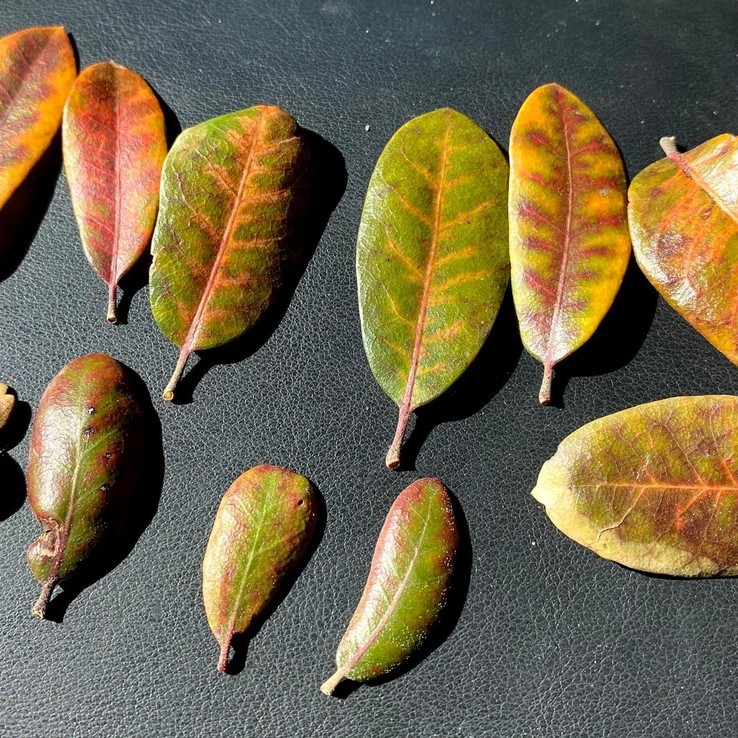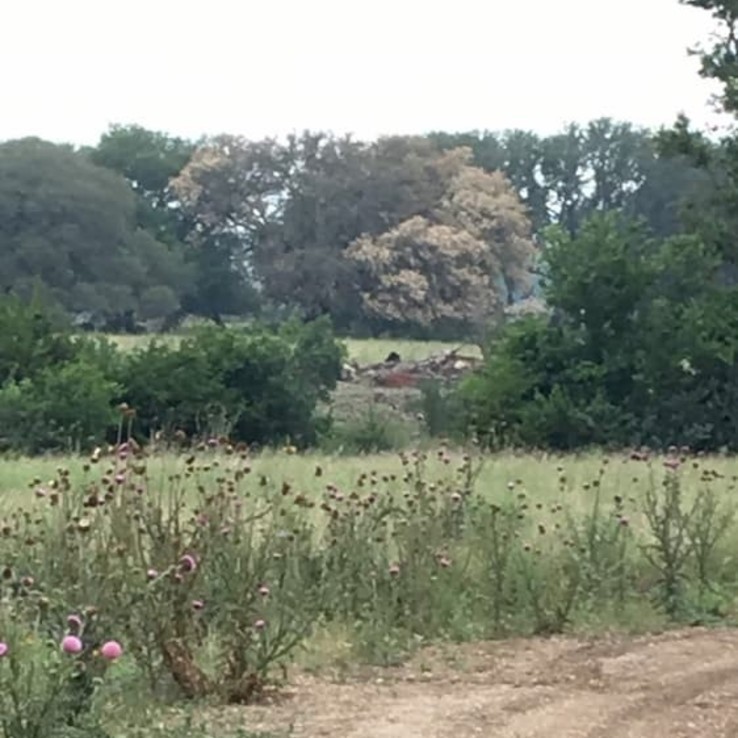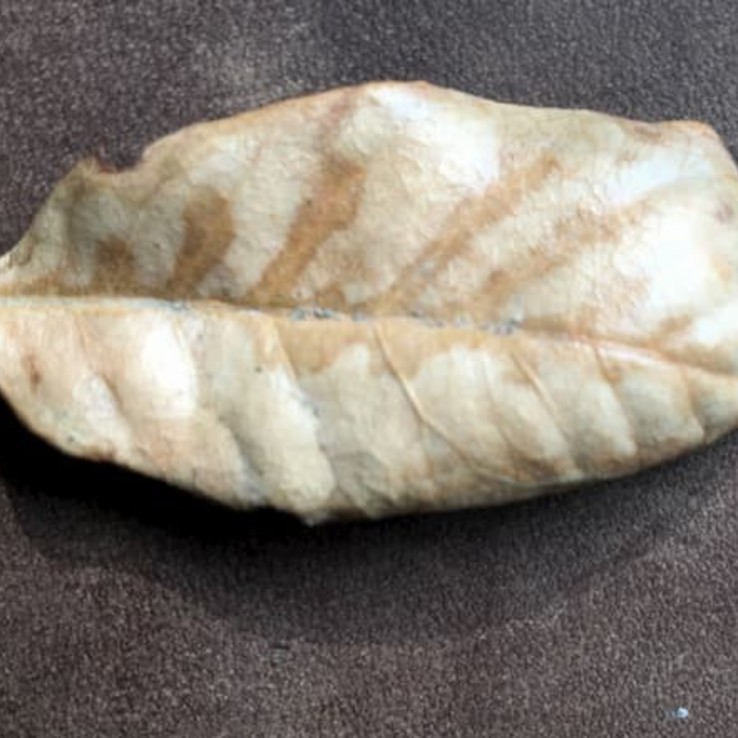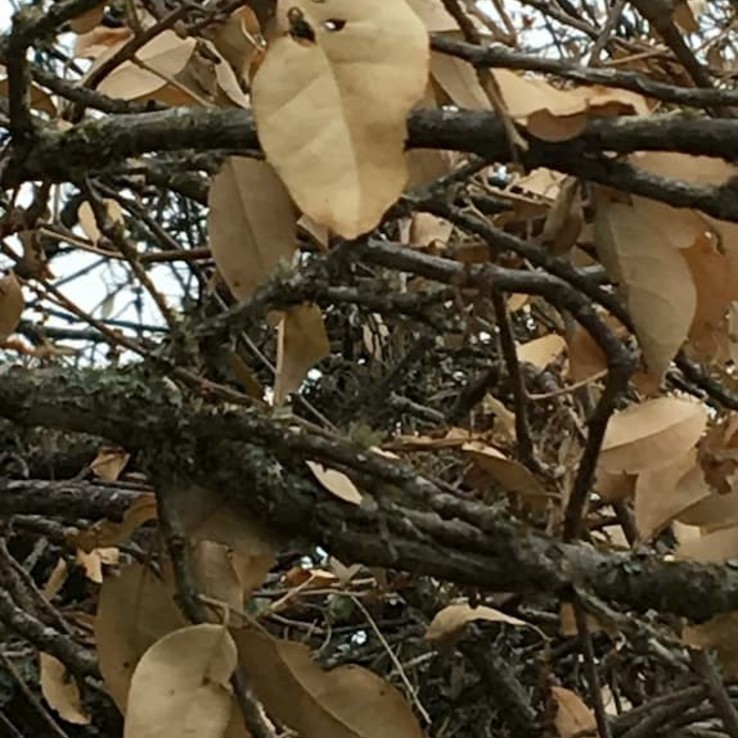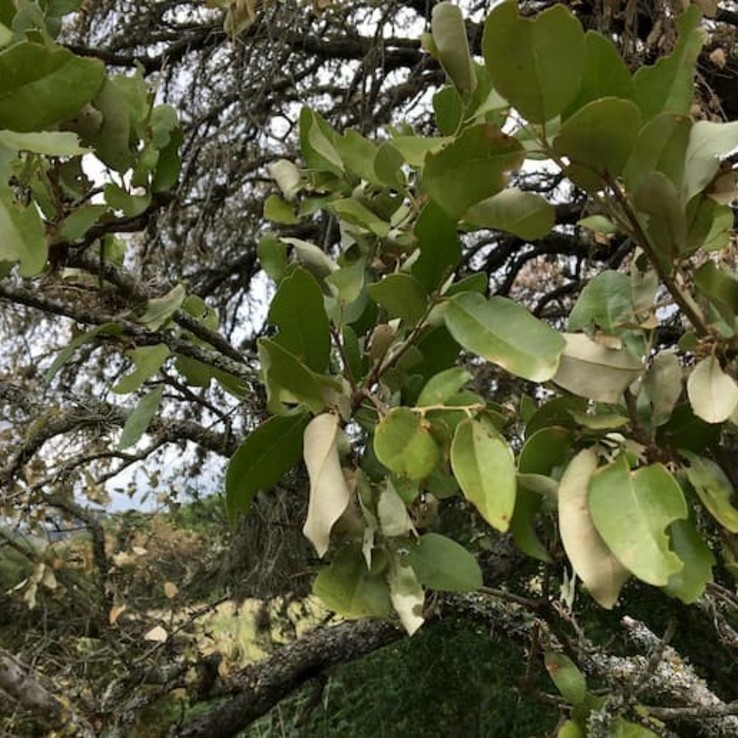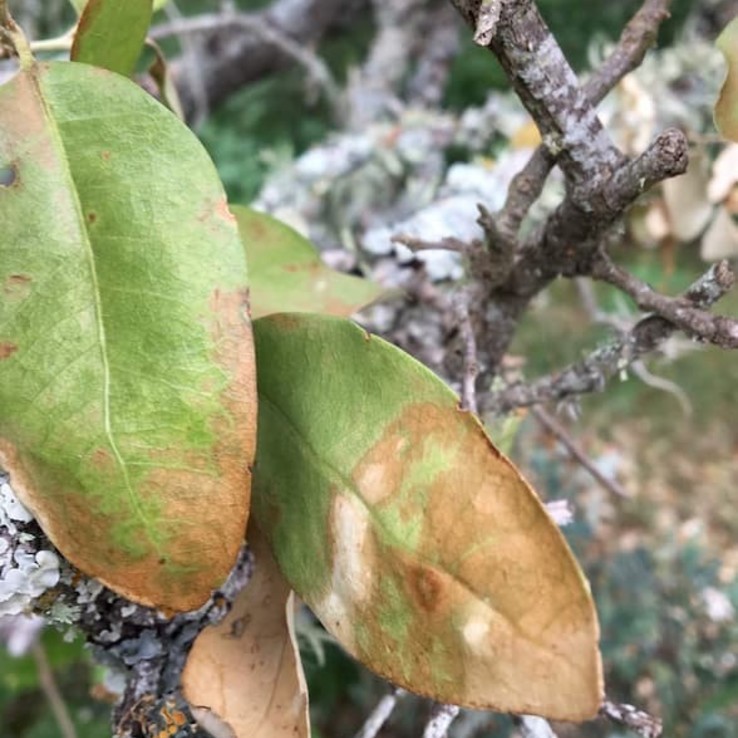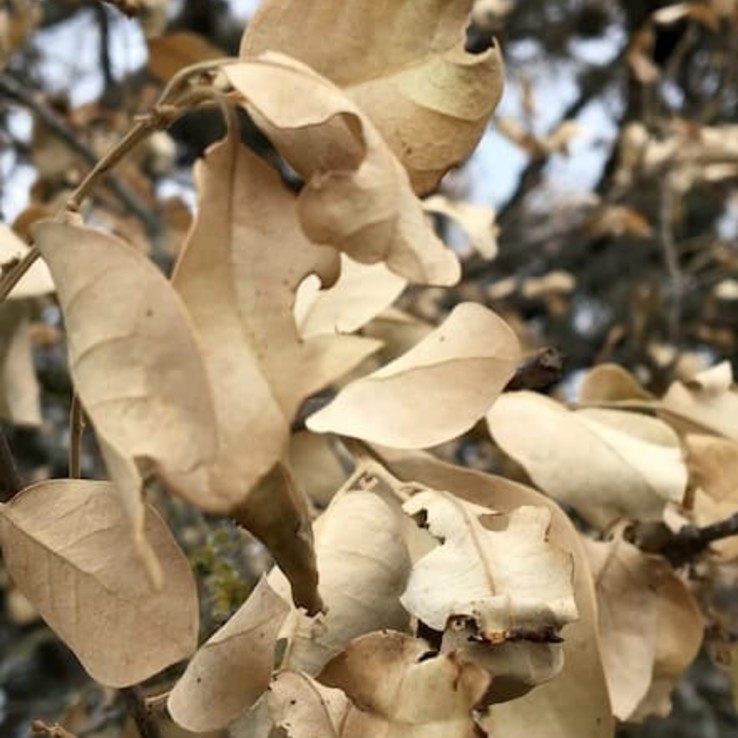Live Oaks
Quercus fusiformis
The native Edwards Plateau Escarpment Live oak (by far the most extensive losses), Southern Live oak, and Coastal Live oak are obviously the most common focus of concern and management in Texas.
This is because one, they are both the most prevalent varieties of oaks in Texas and two, they the most common tree species (both Coastal and Southern Live oaks are installed in this area too) in the hardest hit area in Texas – the central Texas hill country - as well as three, the genetic proclivity of the Live oak varieties to more aggressively expand the mott by regular root sprouting and grafting.
The most typical symptom expressed is that of veinal necrosis – seen in the slightly aged brown leaf above. There are many examples of veinal necrosis below as well. There are numerous reasons why this is the classic leaf symptom BUT it is not the only leaf symptom.
Regularly I observe that the classic symptom does not represent even 50% of the symptomatic leaves on the ground or in the tree. Most importantly, there are often occasions when the classic leaf symptoms are few or even non-existent at the sites I visit. It is for this reason I have chosen to take photos of all the variations of symptoms I see and consequently look for during diagnosis, in order to better assist those hoping to have better information to help them learn and investigate possible
oak wilt situation.
List of foliar symptoms (roughly in order of frequency):
***Most All the below symptoms include leaf drop save for tufting, flashing, canopy yellowing, and
blitzkrieg ghosting, which may or may not exemplify full or partial marcescence.
-
Veinal Necrosis (with lateral veins or without)
-
Leaf Tip Burn (often with tip shriveling)
-
Leaf Margin Burn (often with leaf cupping)
-
Tufting
-
Bronze Wash
-
Veinal Chlorosis
-
Canopy Yellowing
-
Veinal banding
-
Chlorotic mottling
-
Blood-letting (winter color-change Live oaks only)
-
Blitzkrieg Ghosting
-
Speckling





